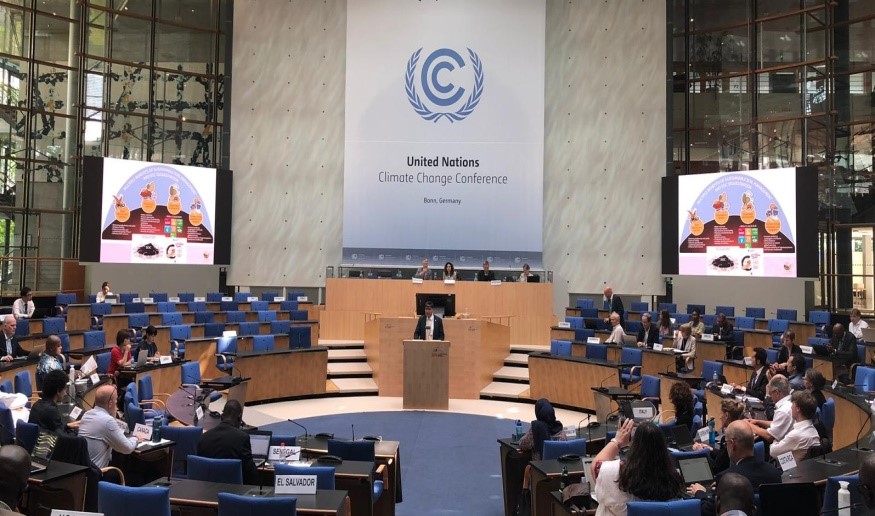Description

Disclaimer: Copyright infringement not intended.
Context
- The Bonn Climate conference was recently finalized in Germany to set the agenda of COP 28 Dubai.
- It was a critical meeting for reforming the climate finance architecture.
Other Details
- In the meeting earlier commitment and targets to fund developing countries, by developed countries, were discussed and reviewed.
- It exposed a wide gap in the commitment made and delivered.
New Collective Quantified Goal
Background
- At conference of Parties (COP) in 2009, commitment of $100 billion per year for developing nations was made by developed countries to fight climate change implications.
- However it is not sufficient and may need trillions of dollars to tackle the effects of climate change.
- Hence in order to consider needs and priorities of developing nations, New Collective Quantified Goal (NCGQ) for climate financing were set in 2015 Paris Climate Agreement.
Need for a new finance goal
- In 2020 Organisation for Economic cooperation and Development reported that only $83.3 billion was disbursed to developing countries out of promised $100 billion per year.
- Also the funds disbursed may be less in actual because it is also notes that the reporting of funds may be shady, dishonest and overinflated (to the tune of 225%) according to an Oxfam analysis.
- There is no clarity on definition of climate finance.
- Also there is no provision or effort to understand the nature or source of such climate financing.
- According to a study by Centre for Science and Environment For instance -
- 5% of climate finance comes from grants.
- Rest 95% through loans and equity.
- It may lead to debt crisis in developing countries and can burden them with high interest rates.
- The funds remain inaccessible, privately sources and mostly delayed.
Significance
- They are also considered the most important climate goal in fight against climate change.
- It increases the upper limit of commitment by developed countries.
- It takes evolving needs and priorities of developing countries into consideration by evaluating them on scientific evidence.
- More funding to fight climate change would be ensured also the requirement for Loss and Damage will be catered.
Position of developed countries
- NCQG must be viewed as collective goals not just for them but for developing countries too.
- This way they are pushing net zero pathways onto developing countries.
- They also advocates that private-sector investments and loans are critical in climate finance
Related concerns
- As per last year's Sharm el-Sheikh Implementation Plan, at least $4 trillion to $6 trillion may be required for climate financing and to push for low carbon economy transition.
- Deadlines for countries, to have consensus on achieving NCQG, are tight.
- No sufficient funds for developing countries to clean energy transition and fight against climate change induced vulnerability.
Way Ahead
- Instead of a single figure there should be separate targets for different areas for instance -
- Mitigation fund
- Adaptation fund
- Loss and damage fund
- More responsibility to be shared by developed nation by recognizing and accepting their historic burden on climate.
- There should be more concessional financing.
- Source and Nature of financing should not be debt creating
- NCQG should be considered as a process to make it equitable.
- Make the transition people led.
Must read Article:
https://www.iasgyan.in/daily-current-affairs/climate-finance
https://www.iasgyan.in/daily-current-affairs/bonn-meeting-on-climate-action
|
PRACTICE QUESTION
New Collective Quantified Goal is the need of the hour to fight against climate change induced vulnerability. Substantiate. Also discuss the concerns associated with these goals and measures that could be taken to make them more effective. (250 words)
|

https://epaper.thehindu.com/ccidist-ws/th/th_delhi/issues/40658/OPS/GJLBCV8M2.1.png?cropFromPage=true












